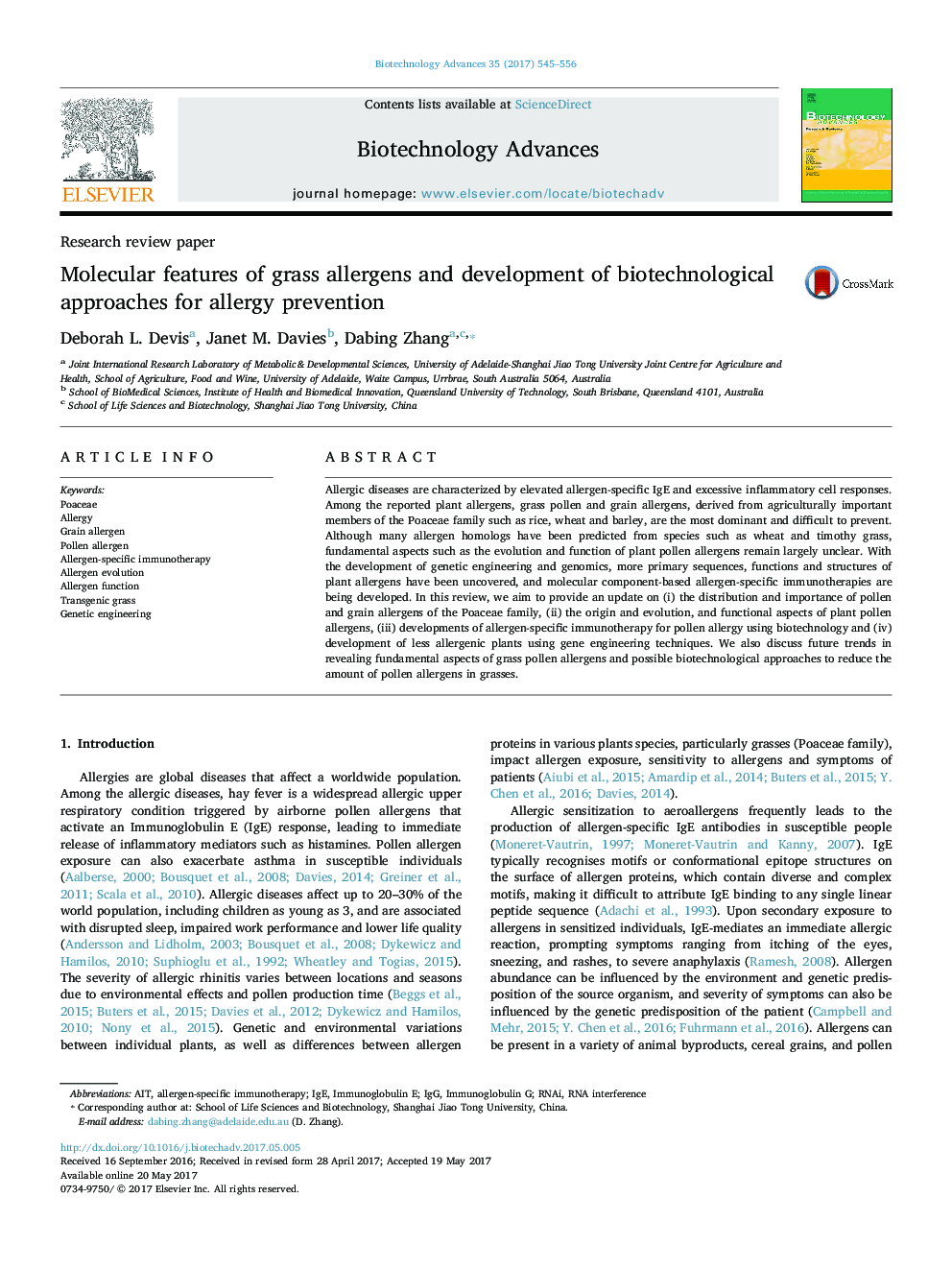| Article ID | Journal | Published Year | Pages | File Type |
|---|---|---|---|---|
| 6451172 | Biotechnology Advances | 2017 | 12 Pages |
Allergic diseases are characterized by elevated allergen-specific IgE and excessive inflammatory cell responses. Among the reported plant allergens, grass pollen and grain allergens, derived from agriculturally important members of the Poaceae family such as rice, wheat and barley, are the most dominant and difficult to prevent. Although many allergen homologs have been predicted from species such as wheat and timothy grass, fundamental aspects such as the evolution and function of plant pollen allergens remain largely unclear. With the development of genetic engineering and genomics, more primary sequences, functions and structures of plant allergens have been uncovered, and molecular component-based allergen-specific immunotherapies are being developed. In this review, we aim to provide an update on (i) the distribution and importance of pollen and grain allergens of the Poaceae family, (ii) the origin and evolution, and functional aspects of plant pollen allergens, (iii) developments of allergen-specific immunotherapy for pollen allergy using biotechnology and (iv) development of less allergenic plants using gene engineering techniques. We also discuss future trends in revealing fundamental aspects of grass pollen allergens and possible biotechnological approaches to reduce the amount of pollen allergens in grasses.
